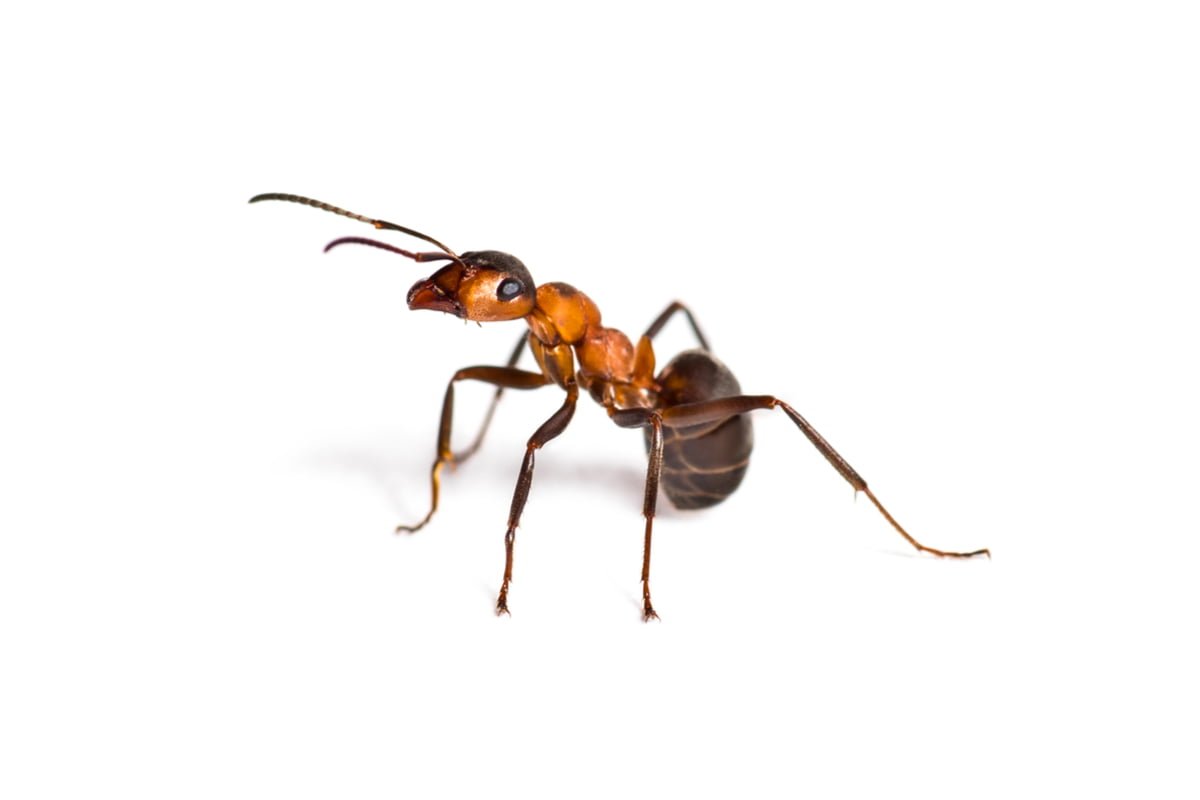Pharaoh Ant
Appearance
The Pharaoh ant’s color ranges from pale yellow to brown to red, with an abdomen usually darker than the rest of the body. The workers range from 1.5 to 2.5 mm, while queens can be from 3.5 mm to 5 mm and are brownish red; darker than the workers. The queens are the only females with wings. The head of pharaoh ants is large, their antennas are bent with a club at the end and they have powerful mandibles (jaws).
Think you might have found this insect in your home?
Talk with an Expert
Life Cycle
Over a lifetime, the pharaoh ant’s queen can lay up to 400 eggs. Ideally, a gestation period of 38 days is required for an egg to become an adult worker ant. Workers live for about 70 days while queens live up to 200 days. The pharaoh ants are difficult to eliminate because they produce several “satellite” colonies associated with the mother colony. These massive colonies have many queens and hundreds of thousands of ants.
Habitat and Food
Pharaoh ants normally build their nests in places that are very difficult to access, for example, in areas that are hot and humid, such as behind baseboards, tiles, or in furniture. They are typically nocturnal and attracted to food such as dead insects, meat, cheese and sweet substances such as syrup, fruits, frozen pies and cakes.
Undesirable Effects
Although pharaoh ants do not sting, they can bite. Once in the house, they feed on almost anything that humans consume. As in the case of any parasite, the infestation of the pharaoh ant is unpleasant for the occupants. In hospitals, this parasite can be a carrier of pathogenic bacteria. The pharaoh ant is particularly difficult to control because it moves its colonies rapidly.
Signs of Infestation
Regular and large numbers of Pharaoh ants around the same area is a sign of infestation.
Preparation Steps for a Treatment
- Do not use insecticide sprays in areas affected by ants before or after treatment. Also, do not clean with chemicals. These products can make the bait less effective.
- Empty all kitchen cabinets and drawers, including crockery and food. Place food in the refrigerator and the rest on a table. Make sure you take everything off of the kitchen counter.
- If ants were seen in the bathroom, clean the vanity.
- Because a general treatment of your home is a possibility, clean the home thoroughly, including inside cabinets and drawers.
- Plan that the AJS specialist may place bait stations in the home. The bait stations should not be moved.
- Plan to leave your home for the duration of the treatment and return only after 4 hours. Wherever possible, open windows for 20 minutes upon your return. It is also important to not walk barefoot on treated areas for 48 hours after treatment.